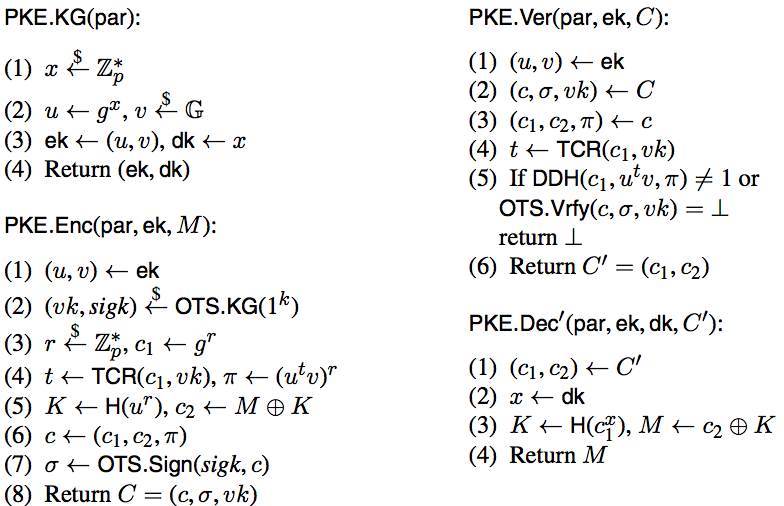
Douglas Stebila
Publicly verifiable ciphertexts
Abstract
In many applications, where encrypted traffic flows from an open (public) domain to a protected (private) domain, there exists a gateway that bridges the two domains and faithfully forwards the incoming traffic to the receiver. We observe that indistinguishability against (adaptive) chosen-ciphertext attacks (IND-CCA), which is a mandatory goal in face of active attacks in a public domain, can be essentially relaxed to indistinguishability against chosen-plaintext attacks (IND-CPA) for ciphertexts once they pass the gateway that acts as an IND-CCA/CPA filter by first checking the validity of an incoming IND-CCA ciphertext, then transforming it (if valid) into an IND-CPA ciphertext, and forwarding the latter to the recipient in the private domain. “Non-trivial filtering” can result in reduced decryption costs on the receivers' side.
We identify a class of encryption schemes with publicly verifiable ciphertexts that admit generic constructions of (non-trivial) IND-CCA/CPA filters. These schemes are characterized by existence of public algorithms that can distinguish between valid and invalid ciphertexts. To this end, we formally define (non-trivial) public verifiability of ciphertexts for general encryption schemes, key encapsulation mechanisms, and hybrid encryption schemes, encompassing public-key, identity-based, and tag-based encryption flavours. We further analyze the security impact of public verifiability and discuss generic transformations and concrete constructions that enjoy this property.
Keywords: ciphertext filtering, public key encryption, identity-based encryption, chosen ciphertext attacks
Reference
Juan González Nieto, Mark Manulis, Bertram Poettering, Jothi Rangasamy, Douglas Stebila. Publicly verifiable ciphertexts. In Ivan Visconti, editor, Proc. 8th Conf. on Security and Cryptography for Networks (SCN) 2012, LNCS, vol. 7485, pp. 393-410. Springer, September 2012. Full version published in Journal of Computer Security. © Springer.
Download
BibTeX
Funding
This research was supported by:- the Australian Technology Network and German Academic Exchange Service (ATN-DAAD) Joint Research Co-operation Scheme
- Australia–India Strategic Research Fund (AISRF) project TA020002
- German Research Foundation (DFG) grant MA 4957
- Hessian LOEWE excellence initiative within the Center of Advanced Security Research Darmstadt (CASED)
- European Center for Security and Privacy by Design (EC SPRIDE)
